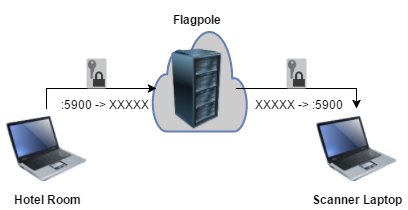The Background Intelligent Transfer Service (BITS) is a
Windows system service that facilitates file transfers between clients
and servers, and serves as a backbone component for Windows Update. The
service comes pre-installed on all modern versions of Windows, and is
available in versions as early as Windows 2000 with service pack updates. There are ways for a non-Administrator
user to manipulate the service into providing an Identification Token with the LUID of 999 (0x3e7), or the NT AUTHORITY\SYSTEM (Local System) root-equivalent user.
BITS Manipulation is a pre-stage to modern privilege escalation attacks.
BITS Manipulation is not a full exploit per se, but rather a pre-stage to local (and possibly remote) privilege escalation with a crafted executable. Identification Tokens can only lead to arbitrary code execution in the prescence of secondary Improper Access Control (CWE-284) vulnerabilities. Google's Project Zero has proved a number of full exploits using the technique. There are currently no known plans for Microsoft to fix this. Details for performing it and why it works remain exceptionally scarce.
Windows Tokens
Every user-mode thread on Windows executes with a Token, which is used as its security identifier by the kernel in order to determine access rights during system calls. When a user starts a process, the Primary Token for that process becomes one which represents the access rights of that user. Individual threads within the process are allowed to change their security context from the Primary Token through the use of Impersonation Tokens, which come in different privilege levels and can allow code execution in the context of a different user.
Impersonation tokens are used throughout Windows in order to delegate responsibilities between users and the OS default users such as Local System, Local Service, and Network Service. For instance, a server process running as Network Service can impersonate a client user and perform actions on that user's behalf. It is extremely common and not suspicious behavior for a process to have multiple tokens open at any given time.
Token Impersonation Levels
A normal user obtaining an Identification Token as Local System is not necessarily an exploit in and of itself (some would argue, but at least not in the eyes of Microsoft). To understand why, a review of Token Impersonation Levels is required.
BITS Manipulation and similar techniques only provide a SecurityIdentification Token for SYSTEM. This is useful for a number of tasks, but it still does not allow arbitrary code execution in the context of that user. Ordinarily, in order to achieve code execution as SYSTEM, the Token would need to be an Impersonation Token with the SecurityImpersonation or SecurityDelegation privilege.
Identification-Only Exploitation
There are a number of vulnerabilities in Windows where the Impersonation Level is not properly validated, such as in MS15-001, MS15-015, and MS15-050. These vulnerabilities failed to check if the Token Impersonation Level was sufficiently privileged before allowing arbitrary code execution in the context of the user.
Here is a (simplified) reverse engineering of services.exe prior to the MS15-050 patch:
Before MS15-050 Patch: The calling thread's Token is checked to see if it is run as SYSTEM, or LUID 999.
With the background information above, the bug is easy to spot. Here is the same code after the patch:
After MS15-050 Patch: The Impersonation Level is now correctly verified before the SYSTEM check.
It should now be apparent why a normal user attempting to escalate privileges would want a SYSTEM Token, even if it is only of the SecurityIdentification privilege. There are countless token access control vulnerabilities already discovered, and more likely to be found.
BITS Manipulation Methodology
BITS, by default, is an automatically started Windows service which logs on as Local System. While the service is primarily used for uploading and downloading files between machines, it is also possible to create a BITS server which services the local machine context. When a download is queued, the BITS service connects to the server as the SYSTEM user.
Forcing a BITS download to an attacker-controlled BITS server allows capture of a SYSTEM token.
Here is the general methodology, which can be performed as a non-Administrator user on the machine:
- Create a BITS server with a local context.
- Launch a BITS download job, causing SYSTEM to start a client to the local BITS server.
- Capture SYSTEM's token when it interacts with the server.
BITS Manipulation Implementation
BITS is served on top of Microsoft's Component Object Model (COM). COM is a topic of extensive study, but it is essentially a language-neutral object-oriented binary-interface which is an arguable precursor to .NET. Remnants of COM objects are found in various areas throughout the system, including inter-process (and inter-network) communications with network and local services. BITS Manipulation is fairly straightforward to implement for a software engineer familiar with the aforementioned methodology, BITS documentation, and experience using COM.
There is an already-written implementation that is available in Metasploit under exploit/windows/local/ntapphelpcachecontrol (MS15-001). The C++ source code offers a simple drop-in implementation for future proof-of-concepts, uncredited but likely written by James Forshaw of Google's Project Zero.





